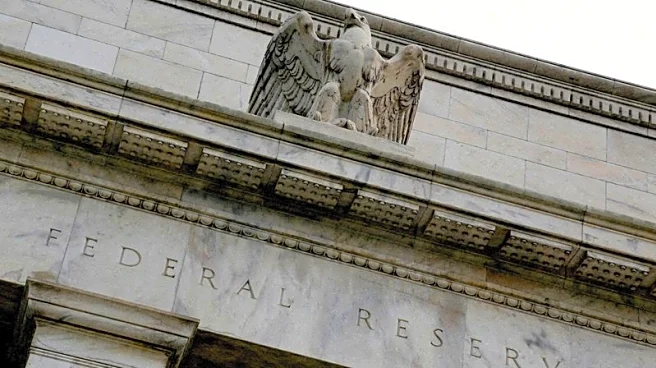What's Happening?
The U.S. Federal Reserve is set to propose significant changes to its annual stress tests for large banks, aiming to make the process more transparent and predictable. The stress tests, established after the 2008 financial crisis, assess banks' resilience
during hypothetical economic downturns. The proposed overhaul will involve disclosing the models and scenarios used in the tests, addressing long-standing industry complaints about opacity. This change is expected to allow banks to better manage capital, potentially leading to increased lending, dividends, and share buybacks. The proposal follows a lawsuit from banking industry groups, which was postponed as the Fed considered these changes.
Why It's Important?
The proposed changes to the stress tests are significant for the banking industry, as they promise to reduce volatility and improve capital management. Greater transparency in the testing process will enable banks to allocate resources more efficiently, potentially boosting economic activity through increased lending and investment. The move reflects a shift towards more collaborative regulatory practices, aligning with industry demands for predictability. This development is crucial for maintaining financial stability and ensuring that banks are adequately prepared for economic challenges.
What's Next?
The Federal Reserve's proposal will be subject to a vote, and if approved, it will mark a major shift in regulatory practices. Banks will need to adapt to the new testing framework, which may involve changes in capital allocation strategies. The outcome of the vote will be closely watched by industry stakeholders, as it could influence future regulatory approaches. The Fed's decision will also impact the broader financial system, potentially setting a precedent for other regulatory bodies.
Beyond the Headlines
The overhaul of stress tests raises questions about the balance between regulatory oversight and industry autonomy. While increased transparency is beneficial, it also requires careful management to ensure that banks remain resilient in the face of economic uncertainties. The changes may prompt discussions about the role of regulation in fostering innovation and competitiveness within the banking sector.














